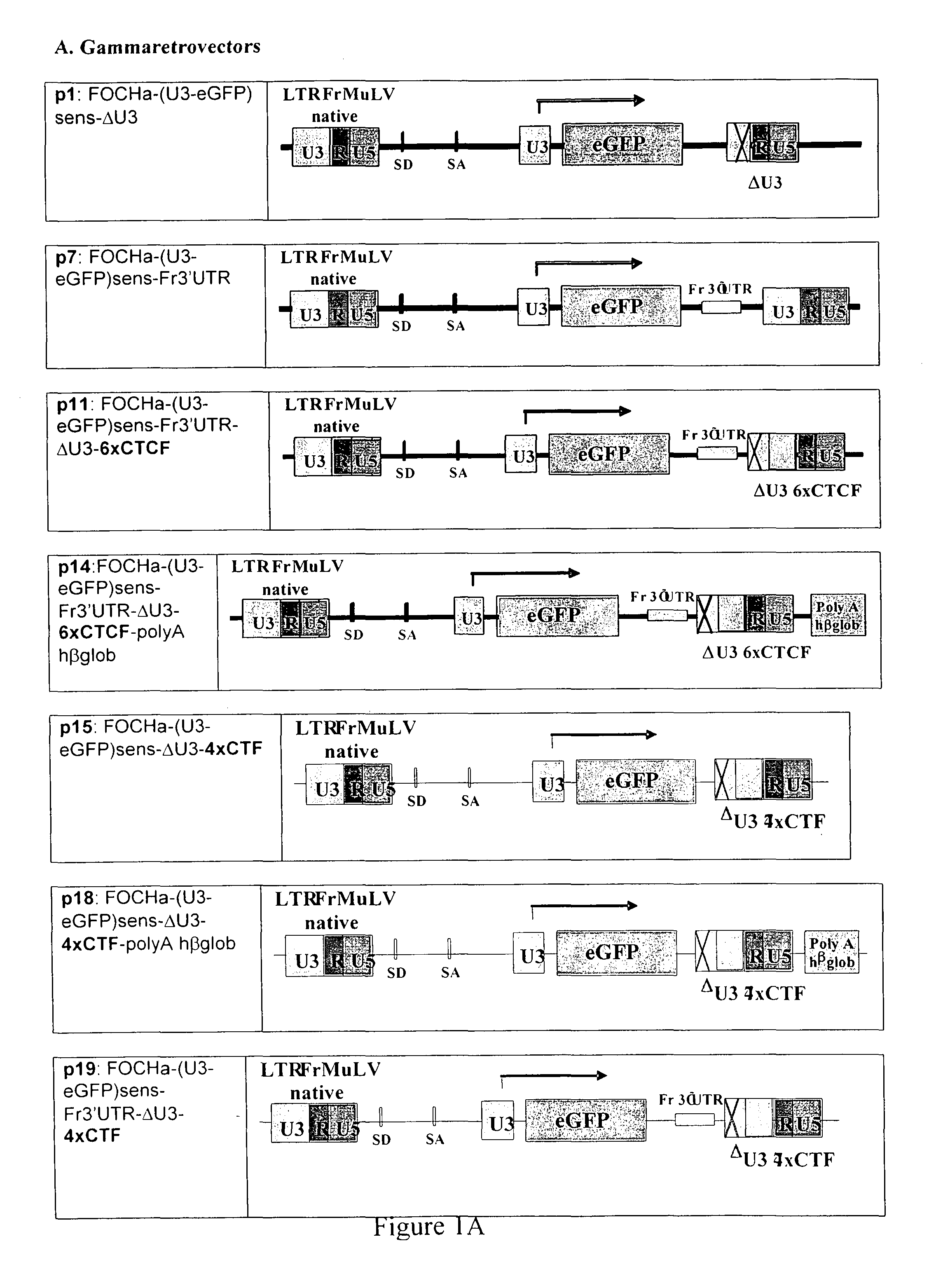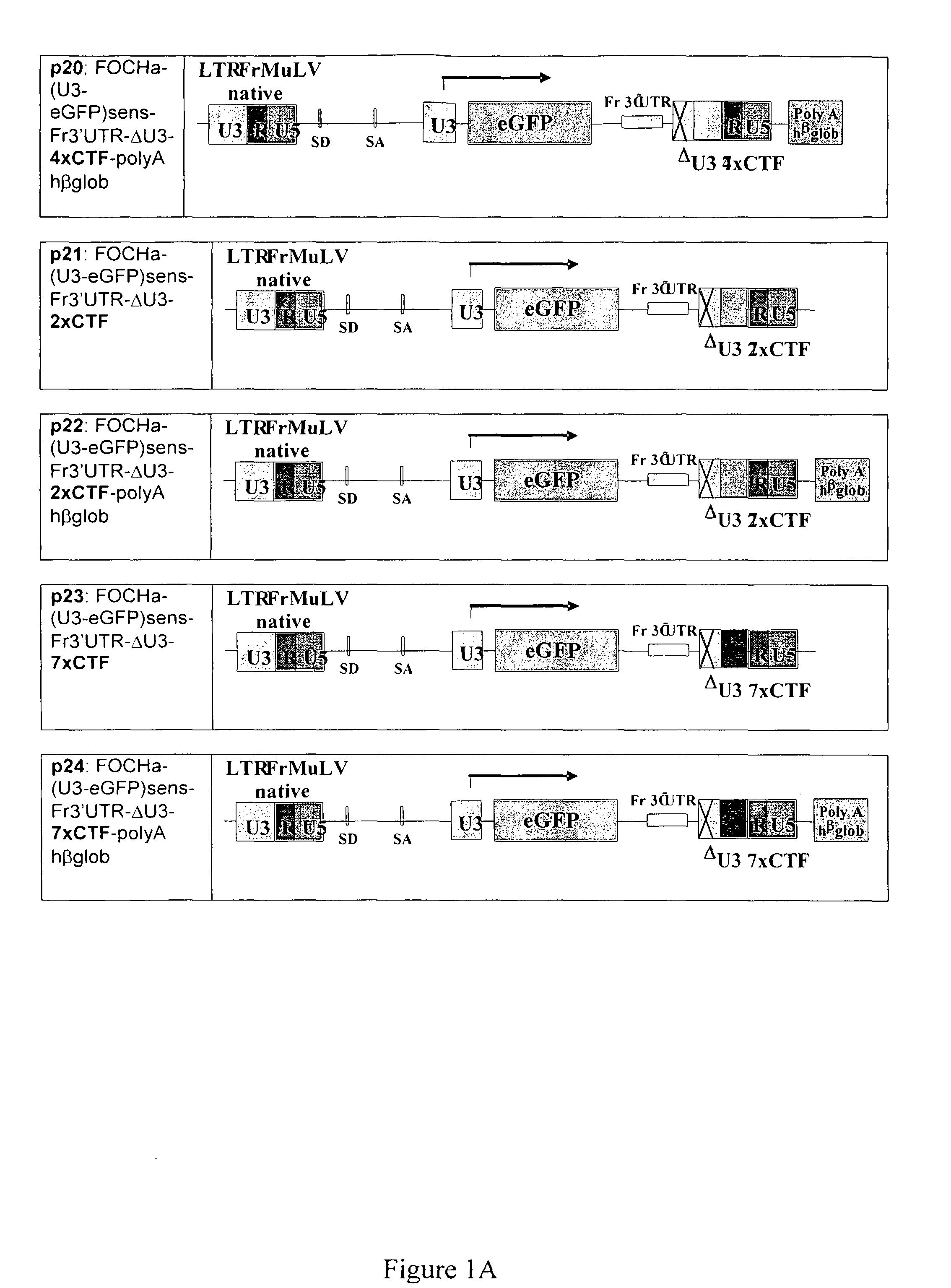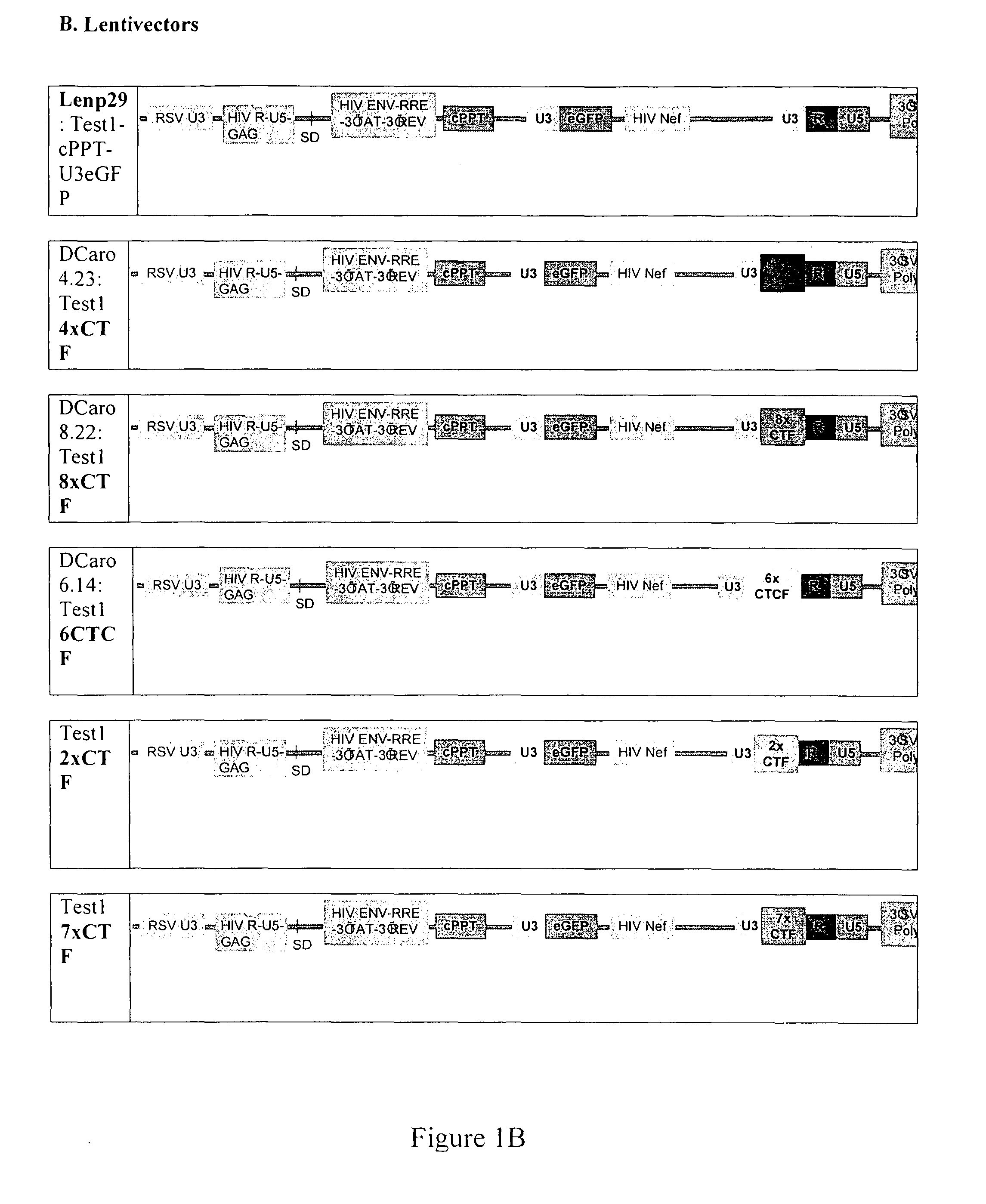Gene transfer vectors comprising genetic insulator elements and methods to identify genetic insulator elements
- Summary
- Abstract
- Description
- Claims
- Application Information
AI Technical Summary
Benefits of technology
Problems solved by technology
Method used
Image
Examples
example 1
Materials and Methods
1.1 Generation of Enhancer-Deleted retrovirus LTRs: Self Inactivating Deletions (SIN)
a. Gammaretroviruses
[0113]From the above native FrMuLV LTR (FIG. 6, SEQ ID NO: 1), a SIN-24 ΔU3LTR version was derived through the deletion of a 388 bp long sequence, from the U3 sequence, resulting in LTR FrMuLV Delta U 3 (FIG. 7, SEQ ID NO: 2).
[0114]In a further step, a BamH1-ClaI polylinker (SEQ ID NO: 3) was added in between base 24 and the start of the R portion of the vector, in order to be able to clone the insulator sequences in later experiments. This step was performed using PCR and the resulting modified LTR sequence was verified (SEQ ID NO: 4).
b. Lentiviruses
[0115]pSIN-18
[0116]pSIN-18 3′ LTR vectors (SEQ ID NO: 5) were used as established by Zufferey et al., (1998). A synthetic 118 bp cPPT sequence encompassing a 5′ HpaII and a 3′ClaI sites was inserted in the original vector natural ClaI site (position 4010).
LENP29
[0117]LENP29 derives from pSIN-18 PGK from which the...
example 2
Results
2.0 Introduction
[0150]The inventors sought to design synthetic GIEs consisting of multimers of specified core sequences. The first one GIE (Insulator 1) is a new combination of CTCF binding sites: 42 bp FII sequence (CTCF1) derived from the HS4 portion of the beta globin gene and a 39 bp BEAD-A sequence (CTCF2) derived from the human T cell receptor alpha / delta locus. Insulator 1 consists of three repeats of the CTCF1-CTCF2 sequence. The second insulator (Insulator 2) comprises multimerised CTF sites which consist of various numbers of repeats of DNA sequences containing CTF binding sites which were isolated from the pNF7CAT plasmid (Tarapore P et al NAR 25: 3895-903, 1997).
[0151]A series of insulated gamma- and lenti-, SIN-retrovirus constructs have been engineered using several combinations of the shortest active stretches for the insulators tested, respectively of 268 bp for Insulator 1 and various number of repeats for Insulator 2 of either 181 bp (8×CTF), 157 bp (7×CTF),...
example 3
Conclusions
[0202]SIN-insulated retrovectors have been constructed with two candidate GIEs and compared to native and SIN-LTRs. With each constructs two internal promoters have been tested: either the strong Fr-MuLV-U3 or the housekeeping hPGK. The inventors have identified a specific combination of insulator 2 repeats which shows functional activity, high titres and boundary effect in both gammaretrovectors (p20) and lentivectors (DCaro4).
[0203]In target cells a dramatic shift of expression is observed with an homogenous expression profile, the level of which is linked to the promoter strength. These data remain stable in both HeLa cells and cord blood HSCs for over three months, irrespective of the multiplicity of infection (MOI). In comparison, control vectors show heterogeneous expression profiles with levels which depend on the MOI and prove unstable over time. The inventors have undertaken genotoxicity assessments in comparing integration patterns in human target cells sampled ...
PUM
| Property | Measurement | Unit |
|---|---|---|
| Volume | aaaaa | aaaaa |
| Volume | aaaaa | aaaaa |
| Volume | aaaaa | aaaaa |
Abstract
Description
Claims
Application Information
 Login to View More
Login to View More - R&D
- Intellectual Property
- Life Sciences
- Materials
- Tech Scout
- Unparalleled Data Quality
- Higher Quality Content
- 60% Fewer Hallucinations
Browse by: Latest US Patents, China's latest patents, Technical Efficacy Thesaurus, Application Domain, Technology Topic, Popular Technical Reports.
© 2025 PatSnap. All rights reserved.Legal|Privacy policy|Modern Slavery Act Transparency Statement|Sitemap|About US| Contact US: help@patsnap.com



